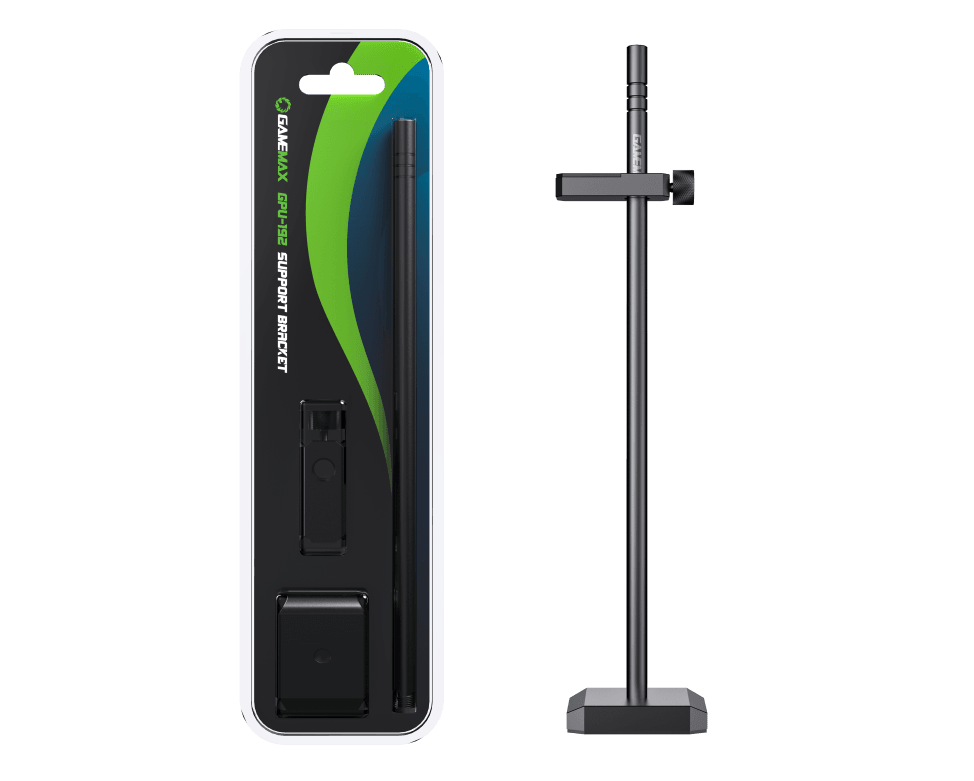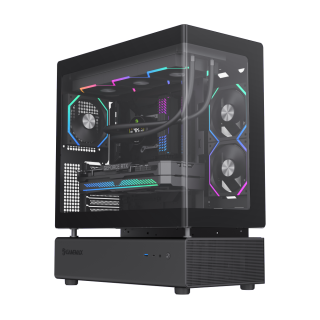Driven by the trend of chassis aesthetics and space optimization, vertical GPU installation has become a mainstream choice. However, this setup introduces risks to signal integrity. High-frequency signals on the PCIe interface (such as the 32Gbps per lane rate in PCIe 5.0) are prone to electromagnetic interference (EMI) during long-distance transmission or through complex signal paths, leading to data errors, performance fluctuations, or even hardware failures. Specific interference sources include:

Design Flaws in Riser Cables: Non-standard riser cards with poor PCB routing, missing shielding layers, or impedance mismatches can cause signal reflections and attenuation. For example, some budget extension cables without multi-layer PCBs or EMI shielding may already show signal errors in PCIe 4.0 mode.
Chassis Environmental Interference: Vertical installation brings the GPU closer to strong electromagnetic sources like power supplies and storage devices. Studies show that PWM signals from power modules in the 50–100MHz frequency band can interfere with PCIe signals, causing eye diagram closure.
Mechanical Stress and Thermal Effects: The GPU’s weight may deform the PCIe slot, leading to poor contact. Meanwhile, high-frequency vibrations from cooling fans can exacerbate signal instability through mechanical conduction.
Hardware-Level Signal Enhancement
High-Frequency Circuit Design: Prioritize riser cards with PCIe 5.0 Retimer chips (e.g., Phison PS7101), whose multi-band equalization technology adapts to different PCB losses and reduces the bit error rate (BER) to below 1e-12. For instance, the ASUS ROG Strix Rise Cable uses high-frequency low-loss PCB and metal shielding, achieving signal loss below 3dB in testing.
Shielding and Grounding: High-quality riser cards should have dual-layer metal shields and grounding clips, suppressing EMI radiation to below -30dBm. 3M copper-based shielding tape (e.g., 3M 1285) can further wrap the cables, enhancing shielding efficiency by 15%.
Installation Process Optimization
Avoid 90-Degree Bends: Riser cables should maintain straight routing; if bending is necessary, the radius must be at least 5 times the cable diameter to reduce signal distortion.
Mechanical Reinforcement: Use chassis-included GPU supports or third-party brackets (e.g., GAMEMAX GPU-192) to prevent slot deformation from gravitational stress.

Structural Design Optimization
Layered Layout: Separate the GPU from power supplies and hard drives using metal partitions, as seen in the GAMEMAX N80 chassis, which reduces EMI radiation by 40%.
Airflow Control: Adopt a bottom-inlet, top-outlet vertical airflow design with low-noise fans (e.g., GAMEMAX FN12A-N2) to minimize electromagnetic interference from fan motors.
Material-Level Shielding Solutions
Conductive Coatings: Spray 3M Conductive Coating 4294 on the chassis interior to boost shielding effectiveness to over 60dB, efficiently blocking external EMI.
Absorptive Material Application: Paste 3M EMI Absorber 2600 series materials around the GPU backplate and riser cable to absorb noise in the 1–10GHz band and improve signal eye diagram quality.
BIOS and Driver Tuning
PCIe Link Training: Enable the "PCIe Gen4/5 Retrain" function in the motherboard BIOS to automatically optimize signal equalization parameters. For example, MSI motherboards’ "PCIe Signal Boost" technology dynamically adjusts pre-emphasis and de-emphasis values.
Power Management: Activate the "PCIe Power Management" option in NVIDIA drivers to reduce GPU power consumption during low loads, minimizing power ripple interference.
System-Level Diagnosis and Validation
Signal Quality Testing: Use a Tektronix DPO70000SX oscilloscope with PCIe 6.0 test fixtures to measure signal eye diagram opening and jitter, ensuring compliance with PCI-SIG specifications.
Stress Testing: Monitor GPU error counters (e.g., "-gErrCnt" parameter) via NVIDIA SMI; errors should remain zero during FurMark stress testing.
High-End Solutions
Riser Card: ASUS ROG Strix PCIe 5.0 Riser Card (supports Retimer chip, shielding effectiveness -35dB)
Chassis: Phanteks Enthoo Elite (full-aluminum structure with partitioned shielding design)
Shielding Materials: 3M 1285 copper foil tape + 2600 series absorber sheets
Cost-Effective Solutions
Riser Card: Thermaltake Premium PCIe 4.0 Extender (silver-plated shielding, compatible with PCIe 4.0)
Chassis: CoolMaster MasterBox TD500 Mesh (built-in GPU bracket + EMI shielding chamber)
Auxiliary Tools: Noctua NA-SAV2 bracket (reduces GPU vibration)
With the adoption of PCIe 6.0 (64GT/s) and CXL 3.0, signal integrity challenges will intensify. Key areas to monitor include:
Material Innovation: New dual-gradient cellulose composites (e.g., MXene/AgNWs) may integrate thermal management and EMI shielding into GPU backplates.
Active Shielding Technology: Devices like Infineon’s CoolSiC™ JFET dynamically adjust electric field distributions to suppress high-frequency noise.
Automated Testing Tools: Equipment like SanBlaze RM6 supports full-link PCIe 6.0 validation, enabling rapid signal issue diagnosis.
Solving signal interference in vertical GPU installation requires coordinated efforts in hardware design, environmental management, and software optimization. By selecting high-quality riser cables, optimizing chassis layout, applying advanced shielding materials, and using system-level diagnostic tools, signal stability can be effectively enhanced. As technology advances, future solutions will increasingly integrate materials science with automated testing to support reliable high-performance computing.

• Detachable modular design
• Integrated wraparound glass panel
• Internal panorama view
• 270° cooling with 6 ARGB fans
• Customizable ARGB sync
• Vertical GPU mount